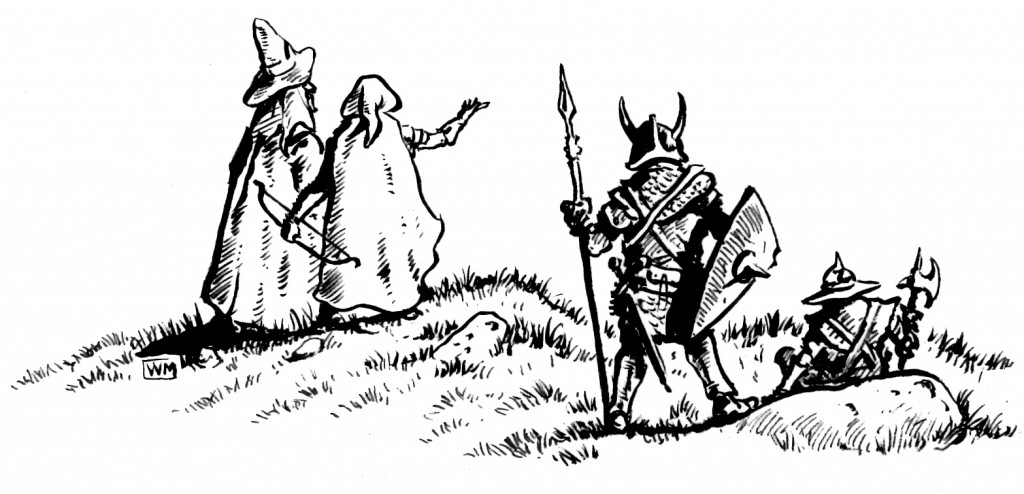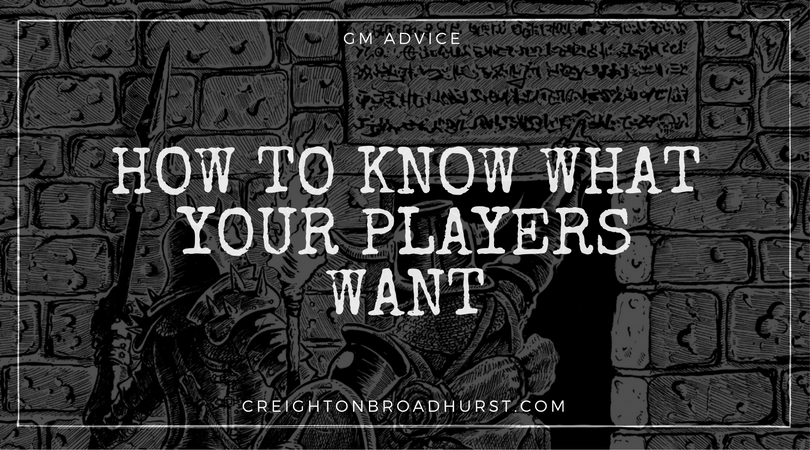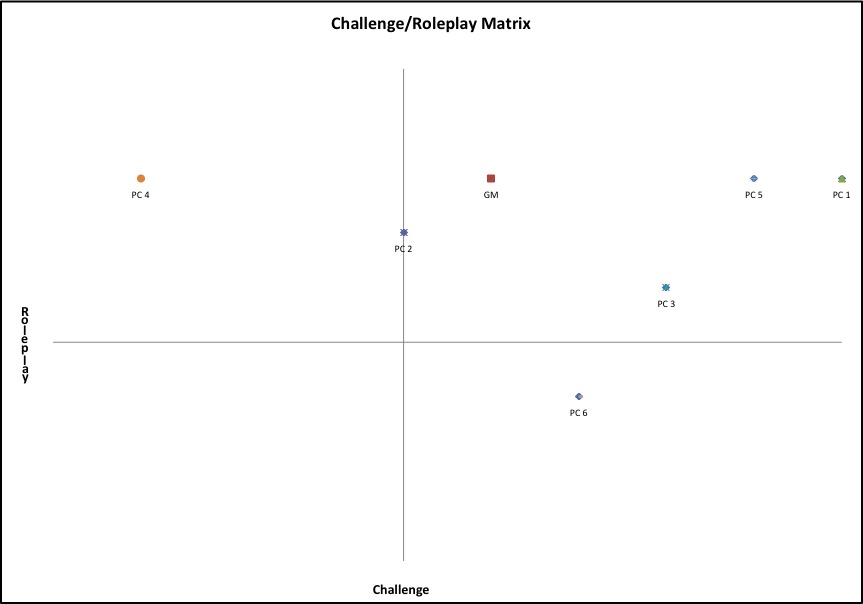So you’re a GM thinking about starting a new campaign. No doubt, you’ve got some cool ideas and are champing at the bit to get started, but how do you know your players will enjoy what you’ve planned? Better yet, wouldn’t it be cool to know what your players enjoy about gaming before spending hours and hours crafting a module or campaign?

One of the most vital aspects of a GM’s “job” is to know the players sitting at his table. While it is likely you may have known and even gamed with some of your players for years (or in my case decades) it is still important to understand exactly what each of the participants wants from a gaming session. For example, if most of your players love combat, crafting a highly complex political campaign is probably going to be a waste of time. I’ve previously blogged about using SurveyMonkey to get feedback from your players about your campaign. But, even before you start to design your campaign you must think about what your players (and of course yourself) want from the game.
Blindingly Obvious Points
- Successful campaigns are those about which all participants feel excited and energised.
- If a campaign or adventure contains elements designed to play to the participants’ likes, the game is much more likely to be a success.
My Problem
Several years ago, I ran into a problem during one of my campaigns. I was running a 3.5 conversion of the classic Temple of Elemental Evil and the campaign had started well, but game play had hit a dead spot. Energy was low around the table and some of the players seemed frustrated. The campaign had clearly hit a stale patch – most of the participants didn’t really seem to be enjoying themselves and I didn’t know why.
Luckily, the (real life) job I held at the time presented a solution. We’d been using Eisenhower matrixes to identify suitable strategic partners and I decided to design one to illustrate what we all wanted to get out of the game. Thus was born the Challenge/Role-Play Matrix
The Challenge/Role-Play Matrix
The challenge/role-play matrix measures gamers’ enjoyment of two things:
- Challenges: Combat, skill challenges etc.
- Role-Playing: Character portrayal and development, campaign back-story, plot and so on.
Using the matrix is simple:
- Ask each player to grade challenge and role-play on a scale of 1 to 10 (1 being dislike a lot and 10 being like a lot).
- Do the same for yourself.
- Plot the results on the matrix.
Plotting the results enables a GM to easily see exactly how his gaming goals relate to his players (and to see how alike his players are).
For example, here are the results of my Temple of Elemental Evil matrix:
Looking at the matrix, the problem was immediately apparent. One of the players (who was the most vocal) much preferred combat to role-play and wherever possible steered the group towards those situations. While most of the other players enjoyed combat, they placed a higher value on the role-playing elements of the game. Hence the tension.
Understanding my players’ proclivities enabled me to design more role-play situations while keeping a large element of combat for the other player. It also made me more aware of the group’s dynamics, which was important in facilitating and directing, or (depending on your point of view) meddling with and manipulating, play.
Final Thought
While the matrix is a handy visual reference, it is still important to talk with the players about the course and flavour of the game; using the matrix, however, gives the GM an excellent place to start that conversion.


From there I prefer EXPLORATION.
I think part of the problem is that often the players aren’t very self actualized about what it is that they want. I do a similar survey myself before beginning a campaign and everyone inevitably says they want “more roleplaying”… so, I design a campaign that is role-play heavy, lots of non-combat situations, social interactions, etc. When we get to the table, however, it’s like pulling teeth to get them follow those hooks. At one point, I even set up a classic “closed room” murder mystery on a cruise ship… the players couldn’t even be bothered to investigate.
My go to tactic? TALK to your PLAYERS. Seriously. Have the conversations about what they’re looking for in a game, what works for them, what doesn’t. Find the things that engage them and incorporate elements of those things into your game. Don’t be afraid to let them try and fail, it makes succeeding that much sweeter.
Realize that sometimes they don’t really know what they want and use that as a starting point. Ask open-ended questions; What’s your favorite book & why? What TV Show or Movie can you watch over & over again, and what keeps you going back to it? If you were to run a (D&D) game, what would it be like?
Even questions like “What was your favorite class in high-school or college?” can reveal bits of critical information that can make the game more engaging to your players. But, don’t forget to ask yourself the same questions. Make sure you, as the GM, are also engaged and having fun. When it becomes a chore, you’ve lost the game.
Exactly, thank you.
I think the reason this isn’t everyone’s course of action is because if a player says they want a specific thing and then you give them that thing then there’s a feeling that “suspense” has been ruined. I don’t believe that myself, but I know it’s a point of contention.
And as pointed out in other comments, players don’t always know what they want, or get what they said they wanted and decide that it’s not what they really wanted. But the conversation about what the players want can and should continue and a GM should do what they can to pivot into that new direction.